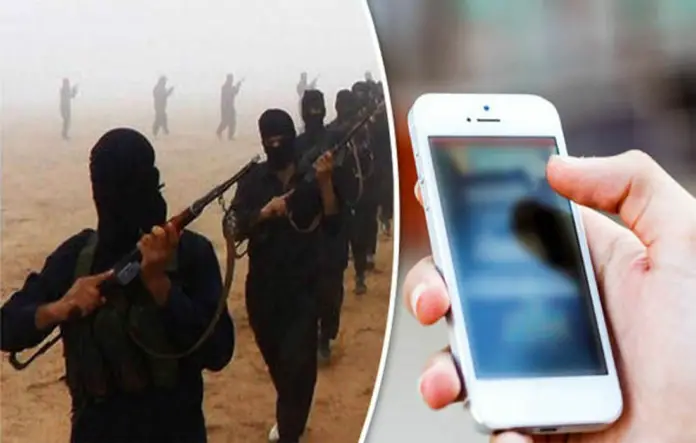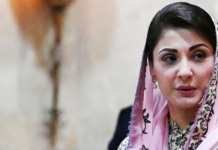In April 2022, a Baloch woman Shari Bramsh wrote what were later in hindsight seen as farewell messages. After a while she would go on to blow herself up in front of the Chinese Cultural Center of Karachi University, killing three Chinese citizens.
Hours later, the banned militant outfit Baloch Liberation Army (BLA) took responsibility of the attack and published Shari’s first picture on their telegram channel. The event signaled a new wave of upgraded terrorism in the country.
A thing that one notices in the picture shared by the BLA were Shari’s red-colored nails and her perfectly trimmed eyebrows. She gave an image of a simple girl who did not understand the complexities of her act, but seemingly did it on a well-imposed agenda by anti-state elements to derail the country’s relation with “iron-brother” China.
The social media posts in which Shari wrote her goodbye messages later went viral. Hundreds of people started sharing her Facebook and Twitter accounts which later became the focus of the cyber-crime wing of Federal Investigation Agency as well.
Days after the incident, BLA’s telegram channel was filled with Shari’s videos and messages for the Baloch youth, labeling herself as their ‘hero’. Her pictures with her children went viral, meant to imply that if a simple and educated girl like Shari could commit such a “heroic” act, then anyone could.
This soft approach of spreading terrorism started when the Majeed Brigade of BLA was created in 2011. Their pictures, showing their faces, that too with them smiling and laughing, were not intended to terrorize the audience, but to help them relate to the fighters. Regarding Shari’s video message, a senior security official, who is an expert in kinesics [study of non-verbal communication], believes that Shari did not record it of her own accord.
“We can clearly see that she is not comfortable when she is talking. Her body language and gestures show that she is reading from a script and the rapid cuts in the video indicate that the script had been combined during post-production,” he stated.
Yet, the event and how the militant organization portrayed itself on social media shows a changing approach on the militants’ part, one which is swift, effective, and aims to utilize social media.
This new approach to social media also involves militant outfits attempting to reach journalists covering conflict.
Kiyya Baloch, a journalist covering militant organizations, describes his interaction with the spokespersons of these outlawed organizations as complicated and tense.
“All of these outfits recognize the importance of social media. They now know that one WhatsApp message is more lethal than a bullet,” says Baloch
Just west of the province in which the BLA operates, the Taliban in Afghanistan are also utilizing a similar approach that puts them in public view. In June 2013, the Taliban, who were at that time fighting against US troops in Afghanistan, opened a political office in Qatar’s capital, Doha, that gave them a legitimate platform to be a stakeholder in the peace talks on Afghanistan with the United Stated of America.
Now, in 2022, after almost a decade of peace negotiations followed by the rapid evacuation of US troops from the war-torn country, the Taliban are the legal and recognized – by most of the neighboring countries – custodians of Afghanistan.
A decade of limelight, with openness towards foreign and regional media, along with strategizing to put their stance to the world through a political office, may have given the Taliban the push to power in Afghanistan. It shows that the organization now, like other terror outfits, understands the power of media and communications.
In Pakistan, the last attack on media by a militant group – Tehreek-e- Taliban Pakistan (TTP) –happened in 2014 when three members of Express News were killed in North Nazimabad Karachi.
Then TTP’s spokesman Ehsan ullah Ehsan contacted the television station right after the attack and claimed responsibility, also saying that the media was not correctly reporting about them.
A source in TTP, on the condition of anonymity, said that over the years, the TTP has learned and gotten inspiration from Afghan Taliban, especially in discipline and media handling.
“We have seen the Afghan Taliban over the years, and with the passage of time, we have centrally organized in terms of media. Before Noor Wali Mehsud took control, people were taking different decisions on their own, but now, all of the main decisions have been taken by the centralized heads,” he said.
He further added that they had a special ministry of broadcast under the command of Mufti Ghufran and even had various dedicated teams, including graphic designers, to produce audio and video content.
“You can visit our website to see how we are working. Sometimes, we operate in free spaces, and sometimes we take other domains as hosts,” he said.
The exhibition of this kind of upgraded digitalization was seldom seen in a militant outfit until recent years. Exploring the group’s website, any person who has a soft corner for Jihad and follows the ideology of TTP can be impressed somewhat easily. The material is available in English, Urdu, Pashto and Persian, indicating that the group has understood the importance of disseminating their ideology through social media in regional languages. It reflects their understanding of and tendency towards what is referred to as ‘fifth generation warfare’.
Kiyya Baloch, in his comments to Minute Mirror, made a comparison between the BLA and TTP. “I have been in touch with both these militant outfits and if I were to compare, the BLA is more educated, aware of international politics, and speaks in a secular tone as compared to the TTP,” he stated.
“The BLA also keeps a softer tone for western press, while the TTP does not have strong trust in the western media,” Kiyya added.
Other than TTP and BLA, a new terror organization in the region, involved in diffusion of its material through media, is the Islamic State of Khorasan Province (ISKP).
Aymenn J Al-Tamimi, a researcher on ISIS, told Minute Mirror that all chapters of the Islamic State were taking their instructions from the central media network of ISIS.
One of these chapters, the Islamic State of Hind Province (ISHP), was formed by the Islamic State in May 2019 to target people in the sub-continent. For the purpose, it has produced a number of magazines in Pashto and also launched its digital channel.
“ISHP’s coverage of this geography can be found in the material produced by the central media as well,” Tamimi said.
The ISKP however, according to Tamimi, is different from the other militant outfits when it comes to how they reach their audience.
“They are secretive and not [conventional]-media friendly at all,” said Tamimi.
Though the ISKP has not yet received a lot of attention in the mainstream media relative to its regional counterparts, Tamimi says that material produced by the group, in the form of magazines and small audio messages, is gaining traction and their social media reach is increasing in different parts of the Pakistan.
Investigative journalist Anna Erelle, in her book ‘Undercover Jihadi Bride’, has thrown light on the Islamic State’s recruitment network on social media. She details how the group uses Facebook and Skype to brainwash young girls and boys in European countries and persuades them to join ‘Jihad’.
Additionally, Valle Riccardo, a research analyst focused on jihadism, security and politics in the Afghanistan-Pakistan region, told Minute Mirror that ISKP believes in a one-sided narrative only, and does not want anyone questioning their ideology.
“Sawt-al-Hind (SAH) [Voice of Hind in English] was launched in February 2020 and is managed by ISHP, while ISKP publishes two different magazines – Voice of Khurasan (in English) and Khurasan Ghag (in Pashto) – for this region particularly,” Riccardo stated.
“We have also seen other material including an Urdu magazine published by ISPP (Wilayah Pakistan), highlighting different issues of the sub-continent and the group’s take on regional issues,” he added.
ISKP’s avoidance of media is also shed light upon by Riccardo, who states that ISKP does not reach out to journalists because they consider their ideology to be above everyone else’s and that it is the “purest”.
“They consider journalists as fighters of the media warfare launched against the Islamic State by the West and the world,” Ricardo stated in his comments to Minute Mirror. However, it was not impossible that the group might reach out to some journalists in the near future, he added.
Journalists caught in the crossfire
In this time of increased engagement of militants with media, digital or otherwise, journalists have to tread with caution.
Pakistani journalists are not new when it comes to getting in touch with militant outfits and gaining information from them.
Most of the time, journalists who cover militant outfits get labelled, typically on social media, as a “spokesperson” of these outlawed groups.
Roohan Ahmad, a journalist who regularly reports on security issues through his social media handles, stated, “People usually forget that we are story tellers. We are not spokespersons. We, as journalists, just provide a platform to the hero and villain of the story to give their narratives.”
This labelling of journalists as spokespersons of terror groups was not always the case. Hamid Mir, the first Pakistani journalist to interview Osama Bin Laden and who interviewed him at least three times between 1997 to 2001, was not at that time labeled a spokesperson of the then Al-Qaeda chief.
Roohan Ahmad explains, “At the time when Mir interviewed Laden, our state policies were different and there was no social media, which is why the source of information from these groups were journalists only and there were no designated spokespersons.”
With increased use of social media, and the ease with which information can be gained and spread, the lines between journalists and spokespersons get blurred. With more and more people reporting on a particular group, it is often the case that the source of information on or from terror groups are journalists rather than designated spokespersons. In such a scenario, people tend to see journalists and spokespersons in the same light.
Roohan adds, “Now, with a different geo-political situation and increased use of social media, people want to label every person according to their preferences, without understanding the difference between a journalist and spokesperson.”
There used to be a time when journalists were picked up by these militant outfits and killed brutally. However, as time has passed, these groups have started to trust journalists. With the understanding of media as a way to disseminate their ideology and message, terror groups understand that even though journalists may not be able to cover their side of the story for the media organization they work for, they can still report their narrative on social media.
This increasing tendency towards media communication on part of terror groups is an aspect to be considered by counter-terrorism policy makers. Telegram channels, Whatsapp groups, websites, and other digital media platforms all have official accounts of terror and militant outfits. Anyone intending to fight these terror organizations must develop a counter-terrorism mechanism considering their proliferation in digital spaces.








Comments are closed.